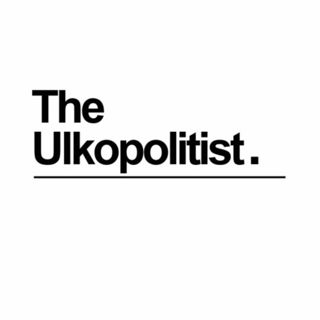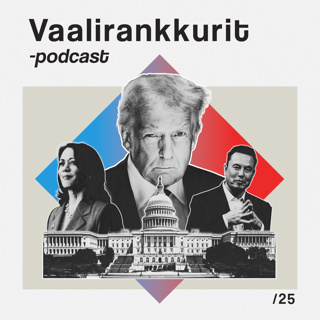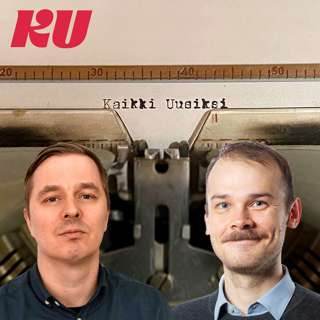
The Fashion Industry's Shifting Landscape: Navigating Challenges and Collaborations in 2025
The fashion industry is navigating a particularly tumultuous and uncertain 2025. A long-feared cyclical slowdown has arrived, with consumers increasingly price sensitive due to recent high inflation. The industry faces a maze of compounding challenges, including geographic disparities, shifting customer behavior, and the acceleration of climate change.Recent market movements indicate sluggish growth, with revenue growth expected to stabilize in the low single digits. The McKinsey Global Fashion Index forecasts that non-luxury will drive the entirety of the increase in economic profit for the first time since 2010, excluding the COVID-19 pandemic[1][3].Emerging competitors, particularly newer "challenger" brands, are coming out on top by being unburdened by historic conceptions about products, stores, and customers. This is evident in the sportswear category, where smaller, innovative players are rapidly capturing market share[1].The industry is also witnessing a significant shift in consumer behavior, with the "silver generation" of over-50 customers growing as a proportion of the overall population and fashion spending. Brands are reevaluating which consumer cohorts to pursue, with a focus on courting these oft-overlooked customers[1].Supply chain developments are critical, with retailers accelerating their reconfiguration of supply chains to prioritize nearshoring and manufacturing in geopolitically aligned countries. This is driven by ongoing shifts in global trade, rising costs, and evolving trade policies[1][3].Regulatory changes are also on the horizon, with stricter environmental regulations expected to impact the industry. The mounting cost of climate change and government action to combat it mean sustainability must remain at the top of the agenda, despite short-term challenges[1][5].In response to these challenges, fashion industry leaders are leveraging collaborations and partnerships to drive expansion and innovation. Brands are forming partnerships focused on sustainability, digital fashion, and experiential retail to reach new markets and generate excitement[2][4].Examples include Adidas x Gucci, Levi’s x GANNI, and Nike x Tiffany & Co., which have successfully merged creative visions and expanded reach. The future of fashion collaborations and partnerships will continue to evolve, with emerging trends like sustainability, digital fashion, and AI-powered curation becoming more prevalent[2][4].In conclusion, the fashion industry in 2025 is characterized by sluggish growth, shifting consumer behavior, and significant market disruptions. Industry leaders are responding by embracing collaborations, prioritizing sustainability, and reconfiguring supply chains. As the industry navigates these challenges, it is clear that only those who adapt and innovate will thrive in the coming years.This content was created in partnership and with the help of Artificial Intelligence AI
25 Helmi 3min

Fashion Industry Navigates Uncertain Landscape in 2025: Strategies for Resilience and Growth
The fashion industry is currently navigating a tumultuous and uncertain landscape, marked by sluggish growth, economic uncertainty, and shifting consumer behavior. According to the McKinsey Global Fashion Index, revenue growth is expected to stabilize in the low single digits in 2025, a continuation of the sluggishness seen in 2024[1][3].A long-feared cyclical slowdown has arrived, with consumers, scarred by recent high inflation, becoming increasingly price sensitive. The rise of dupes, acceleration of climate change, and continued reshuffling of global trade are also significant challenges. Regional differences, which became more pronounced in 2024, will become even starker in 2025, with Europe benefiting from falling inflation and increased tourism, the resilience of high-net-worth individuals in the US, and new growth engines in Asia counteracting uncertainty around consumer spending in China[1][3].Fashion leaders are pessimistic about the year ahead, with only 20% expecting improvements in consumer sentiment in 2025, while 39% see industry conditions worsening. The geographic drivers of revenue and economic profit are undergoing historic shifts, with brands pivoting focus to other Asian markets, notably Japan, Korea, and India, as China faces macroeconomic headwinds[1][3].Consumer confidence is a top risk for 2025, cited by 70% of fashion leaders, followed by geopolitical instability and economic volatility. Inflation, which was a major concern in 2023, has fallen down the list of executives' concerns as central banks lower interest rates and inflation cools[3].In response to these challenges, fashion companies are focusing on building pricing muscle, honing profitability, and broadening scenario planning to capture the full range of economic and political outcomes. Brands are also updating their organizational structures, introducing new roles or elevating existing ones to target key growth opportunities and respond more effectively to risk[2].Compared to previous years, the industry's outlook is more cautious. In 2023, 84% of industry leaders expected market conditions to decline or stay the same, a stark contrast to the cautious optimism in 2022[2]. The luxury segment is expected to show more resilience, with sales projected to grow 5% to 10% in 2025, while the rest of the industry faces flat or negative growth[1][3].In conclusion, the fashion industry is facing a complex and challenging environment in 2025, characterized by sluggish growth, economic uncertainty, and shifting consumer behavior. Fashion leaders are responding by focusing on pricing, profitability, and scenario planning, while also adapting to regional shifts and emerging trends.This content was created in partnership and with the help of Artificial Intelligence AI
24 Helmi 3min

Navigating Fashion's Turbulent Landscape: Strategies for Growth in 2025
The current state of the fashion industry is marked by significant challenges and uncertainties. According to the latest McKinsey report, The State of Fashion 2025, the industry is expected to experience sluggish growth, with revenue growth stabilizing in the low single digits[1][4]. This continuation of the trend seen in 2024 is largely due to economic uncertainty, geographic disparities, and shifting customer behavior and preferences.One of the key factors affecting the industry is the recent period of high inflation, which has made consumers increasingly price sensitive. The rise of "dupes" - affordable alternatives to luxury items - and the acceleration of climate change are also impacting the industry[1][4]. Additionally, the reshuffling of global trade is leading to changes in sourcing strategies, with brands diversifying their footprint in Asia and considering nearshoring to better respond to fast-shifting consumer demand[4].Despite these challenges, there are still opportunities for growth. The luxury segment, which has led in value creation in recent years, is expected to see continued demand, particularly in regions like Japan and India[1][4]. Furthermore, the rise of AI-powered curation across content and search is expected to reinvent brand and product discovery, helping brands to better engage with overwhelmed consumers[4].In response to these challenges, fashion industry leaders are focusing on building pricing muscle, honing profitability, and broadening scenario planning to capture the full range of economic and political outcomes[3]. Brands are also leveraging collaborations to reach new audiences and build hype. Recent examples include Louis Vuitton's collaboration with Takashi Murakami, Cecilie Bahnsen's partnership with The North Face, and Balenciaga's synergy with Under Armour[2].Compared to previous years, the industry's outlook is more pessimistic. In the BoF-McKinsey State of Fashion Executive Survey, only 20% of executives expect improvements in consumer sentiment in 2025, while 39% see industry conditions worsening[1][4]. This is a stark contrast to the cautious optimism seen in 2022, when 91% of executives predicted market conditions would improve or remain the same[3].In conclusion, the fashion industry is navigating a complex landscape of challenges and uncertainties. While there are still opportunities for growth, particularly in the luxury segment and through strategic collaborations, the industry must adapt to shifting consumer behavior, price changes, and supply chain developments. By focusing on building pricing muscle, honing profitability, and leveraging AI-powered curation, fashion industry leaders can better navigate the maze of compounding challenges at every turn.This content was created in partnership and with the help of Artificial Intelligence AI
21 Helmi 3min

Fashion's Uncertain Future: Challenges and Opportunities for 2025
The current state of the fashion industry is marked by significant challenges and uncertainties. According to the latest report from McKinsey, the industry is expected to experience sluggish growth in 2025, with revenue growth stabilizing in the low single digits[1][4]. This slowdown is attributed to various factors, including high inflation, which has made consumers increasingly price-sensitive, and the surprising rise of "dupes" or affordable alternatives to luxury brands.Moreover, regional differences are becoming starker, with Europe benefiting from falling inflation and increased tourism, while the US sees resilience from high-net-worth individuals. Asia, particularly Japan, Korea, and India, are emerging as new growth engines to counteract uncertainty around consumer spending in China, which is still recovering from the pandemic[1][4].Despite these challenges, there are opportunities for brands that adapt quickly to the changing landscape. Fashion collaborations are on the rise, with notable partnerships such as Louis Vuitton x Takashi Murakami, Cecilie Bahnsen x The North Face, and Balenciaga x Under Armour, showcasing the power of brand partnerships in shaping tomorrow's style landscape[2].However, the industry's outlook remains pessimistic, with only 20% of fashion leaders expecting improvements in consumer sentiment in 2025, while 39% see industry conditions worsening[1][4]. This pessimism is reflected in the BoF-McKinsey State of Fashion Executive Survey, where executives identified inflation, geopolitical tensions, and climate crises as key concerns.In response to these challenges, fashion companies are rethinking their operations, updating organizational structures, and focusing on cost improvements and pricing strategies. Brands are also leveraging data analytics and technology to manage inventory efficiently and respond to fast-shifting consumer demand[3].Comparing current conditions to previous reporting, the industry's recovery from the COVID-19 pandemic has slowed, and the expected growth in 2025 is significantly lower than the 21% year-on-year growth seen in 2021[3]. The industry's resilience in the face of uncertainty is being tested, and brands that navigate these challenges effectively will be better positioned for success.In conclusion, the fashion industry is facing a tumultuous and uncertain 2025, with sluggish growth, shifting consumer behavior, and regional disparities. However, there are opportunities for brands that adapt quickly and focus on cost improvements, pricing strategies, and innovative collaborations. By understanding these challenges and responding effectively, fashion industry leaders can navigate the maze of compounding challenges and seize growth opportunities in a chaotic marketplace.This content was created in partnership and with the help of Artificial Intelligence AI
20 Helmi 3min

Fashion's 2025 Challenges: Collaborations, Sustainability, and Tech Innovations Shaping the Industry
The fashion industry is entering 2025 with a mix of challenges and opportunities. According to the McKinsey & Company's State of Fashion 2025 report, the industry is expected to grow at a low single-digit rate, reflecting economic deceleration and muted consumer confidence[1][4]. This sluggish growth is a continuation of the trend seen in 2024, with non-luxury segments outperforming luxury for the first time since 2010, excluding the COVID-19 pandemic[1].Key factors influencing the industry include economic uncertainty, geographic disparities, shifting customer behavior, and the acceleration of climate change. Consumers, affected by recent high inflation, are increasingly price-sensitive, leading to a rise in the popularity of "dupes" or affordable alternatives to luxury items[1]. Regional differences are becoming more pronounced, with Europe benefiting from falling inflation and increased tourism, while the United States sees resilience in high-net-worth individuals, and Asia, particularly Japan, Korea, and India, emerge as new growth engines to counteract uncertainty in China[1].In response to these challenges, fashion brands are turning to collaborations and partnerships as a strategic necessity to expand their reach and innovate. Sustainability-focused collaborations are on the rise, with brands teaming up with eco-friendly companies to create collections using recycled materials and promoting ethical practices[2]. Cross-industry collaborations are also becoming more common, allowing brands to reach new demographics and broaden their appeal. Examples include Adidas x Gucci, Levi’s x GANNI, and Nike x Tiffany & Co., which have successfully merged different aesthetics and attracted diverse audiences[2][5].The industry is also seeing a shift towards digital fashion, with tech companies and fashion brands collaborating on digital clothing lines, virtual try-ons, and NFT fashion items. This integration of technology and fashion is expected to continue, with brands leveraging AI-driven design and augmented reality shopping experiences to captivate consumers[2].Fashion executives are generally pessimistic about the year ahead, with 39% expecting industry conditions to worsen and only 20% anticipating improvements in consumer sentiment[1]. To navigate these challenges, brands are focusing on building pricing capabilities to adapt to high inflation, honing profitability by prioritizing the bottom line, and reassessing distribution channel mixes to respond to fast-shifting consumer demand[3].In conclusion, the fashion industry in 2025 is characterized by economic uncertainty, shifting consumer behaviors, and the need to embrace sustainability and technological advancements. Brands are responding by leveraging collaborations and partnerships to expand their reach and innovate, while also focusing on strategic planning and operational efficiency to navigate the complex global landscape.This content was created in partnership and with the help of Artificial Intelligence AI
19 Helmi 3min

Fashion in 2025: Navigating Uncertainty, Resilience, and Opportunities
The fashion industry is currently navigating a tumultuous and uncertain landscape in 2025. According to the McKinsey & Company's State of Fashion 2025 report, the industry faces economic headwinds, shifting consumer behaviors, and the need to embrace sustainability while navigating complex global trade dynamics.The global fashion industry is expected to grow at a low single-digit rate in 2025, reflecting economic deceleration and muted consumer confidence. This sluggish growth continues from 2024, with revenue growth expected to stabilize in the low single digits. Notably, non-luxury segments are forecasted to outperform luxury, marking a significant shift in profit drivers[1][3][5].Consumer behavior has become increasingly price-sensitive due to the recent period of high inflation. The rise of "dupes" and the acceleration of climate change further complicate the industry's challenges. Regional differences, which became more pronounced in 2024, will become even starker in 2025, with Europe benefiting from falling inflation and increased tourism, while uncertainty persists in markets like China and the United States[1][3][5].Fashion leaders are pessimistic about the year ahead, with only 20% expecting improvements in consumer sentiment in 2025, while 39% see industry conditions worsening. This pessimism is reflected in the BoF-McKinsey State of Fashion Executive Survey, which highlights the industry's concerns about inflation, geopolitical instability, and supply chain disruptions[1][5].In response to these challenges, industry leaders are focusing on building pricing muscle, honing profitability, and broadening scenario planning to capture the full range of economic and political outcomes. Brands are also reconfiguring their supply chains, embracing nearshoring and vertical integration to better respond to fast-shifting consumer demand[2][5].Compared to previous years, the industry's outlook has become increasingly cautious. In 2023, fashion executives were already anticipating a slowdown, with 84% expecting market conditions to decline or stay the same. The current conditions reflect a continuation of these trends, with the industry now facing a time of reckoning[2].In conclusion, the fashion industry in 2025 is characterized by sluggish growth, shifting consumer behaviors, and significant regional variances. Industry leaders are responding by focusing on pricing strategies, profitability, and supply chain resilience. As the industry navigates these challenges, it is clear that only those brands that move nimbly and adapt quickly to upheavals in the chaotic marketplace will find opportunities for growth.This content was created in partnership and with the help of Artificial Intelligence AI
18 Helmi 3min

Fashion Industry Navigates Uncertain Future: Strategies for Resilience and Growth
The fashion industry is currently navigating a tumultuous and uncertain landscape, marked by a cyclical slowdown, high inflation, and shifting consumer behavior. According to the latest McKinsey report, The State of Fashion 2025, 80 percent of executives expect no improvement in the global fashion industry this year, with 39 percent anticipating worsening conditions[1][3].Revenue growth is expected to stabilize in the low single digits, a continuation of the sluggishness seen in 2024. The luxury segment, which has traditionally led in value creation, is expected to see slower growth, while non-luxury brands are forecast to drive the entirety of the increase in economic profit for the first time since 2010[1][3].Consumers, scarred by recent high inflation, are increasingly price sensitive, leading to a rise in demand for affordable alternatives, known as "dupes." This trend, combined with the acceleration of climate change and the reshuffling of global trade, is forcing brands to adapt and diversify their sourcing footprint[1][3].Regional differences are becoming more pronounced, with Asia emerging as a key growth engine. China's economic deceleration has led international fashion brands to look to other Asian markets, such as India and Japan. India is expected to be a focus for high-street players, while Japan's luxury boom is expected to continue into 2025[1][3].In response to these challenges, fashion industry leaders are prioritizing scenario planning, building pricing muscle, and honing profitability. This includes broadening scenario planning to capture the full range of economic and political outcomes, building greater pricing capabilities to adapt to a high-inflation environment, and focusing on the bottom line to prioritize profitability over revenue and market share[2].The industry is also seeing a shift towards nearshoring and vertical integration, with brands looking to diversify their sourcing footprint and reduce reliance on long supply chains. Additionally, there is a growing focus on digital marketing, with brands embracing creative campaigns and new channels such as retail media networks and the metaverse to achieve greater ROI on marketing spend[2].Compared to previous reporting, the current conditions are more pessimistic, with a greater emphasis on economic uncertainty and geographic disparities. The industry's sales are expected to grow at a slower rate than in previous years, with a significant share of sales affected by rising costs and prices[2].In conclusion, the fashion industry is facing a complex and challenging landscape, marked by sluggish growth, high inflation, and shifting consumer behavior. To navigate these challenges, industry leaders must prioritize scenario planning, build pricing muscle, and hone profitability, while also adapting to emerging trends and shifts in consumer behavior.This content was created in partnership and with the help of Artificial Intelligence AI
17 Helmi 3min

Fashion's Uncertain Future: Industry Outlook and Strategies for 2025
The current state of the fashion industry is marked by significant challenges and uncertainties. According to the latest report from McKinsey & Company, the industry is expected to face a particularly tumultuous and uncertain 2025, with a long-feared cyclical slowdown having arrived[1][4].Consumers, affected by the recent period of high inflation, are increasingly price sensitive. This has led to a rise in the popularity of "dupes," or affordable alternatives to luxury fashion items. Additionally, the acceleration of climate change and the continued reshuffling of global trade are expected to have a significant impact on the industry.In terms of market movements, the fashion industry's outlook for 2025 appears to be a continuation of the sluggishness seen in 2024, with revenue growth expected to stabilize in the low single digits. While luxury has led in value creation in recent years, the McKinsey Global Fashion Index forecasts that in 2024, it is non-luxury that will drive the entirety of the increase in economic profit for the first time since 2010 (excluding Covid-19)[1][4].Despite these challenges, there are still opportunities for growth to be found. Fashion leaders are responding to current challenges by diversifying their supply chains, investing in sustainability, and focusing on digital transformation. For example, Louis Vuitton has partnered with Japanese artist Takashi Murakami to create a new collection that combines art and couture, while SKIMS has collaborated with K-pop star ROSÉ to launch a Valentine's Day collection[2].In terms of consumer behavior, there has been a significant shift towards online shopping, with e-commerce growth normalizing after its pandemic boom. However, consumers are becoming more cautious about their discretionary spending, with Europeans intending to make the biggest spending cuts on apparel, footwear, and accessories[3].In response to these challenges, fashion executives are prioritizing scenario planning, building pricing muscle, and honing profitability. According to the BoF-McKinsey State of Fashion 2025 Survey, 80% of executives expect no improvement in the global fashion industry in 2025, while 39% see industry conditions worsening[4].Overall, the current state of the fashion industry is marked by significant challenges and uncertainties. However, by diversifying supply chains, investing in sustainability, and focusing on digital transformation, fashion leaders can navigate these challenges and find opportunities for growth.Key statistics:- 80% of executives expect no improvement in the global fashion industry in 2025[4].- 39% of executives see industry conditions worsening in 2025[4].- Revenue growth is expected to stabilize in the low single digits in 2025[1][4].- Non-luxury is expected to drive the entirety of the increase in economic profit in 2024[1][4].- Consumers are becoming more cautious about their discretionary spending, with Europeans intending to make the biggest spending cuts on apparel, footwear, and accessories[3].This content was created in partnership and with the help of Artificial Intelligence AI
14 Helmi 3min





















